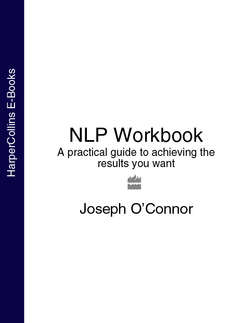Читать книгу NLP Workbook: A practical guide to achieving the results you want - Joseph O’Connor - Страница 24
The Effective Meeting Pattern
ОглавлениеThis pattern uses perceptual positions to prepare for a meeting. It can transform difficult meetings into productive ones and make good meetings even better.
Choose an upcoming meeting where you want greater understanding. It does not need to be one involving potential conflict or bad feeling.
Position two chairs to represent the seats on which you and the other person will be sitting.
Sit on one chair. This is your first position. From this point of view ask yourself:
What is your outcome for this meeting? (There may be a main goal and some subsidiary ones. Occasionally these may be in conflict or mutually exclusive such as ‘I want to discuss the matter fully and get out quickly.’)
How will you know if you have achieved these goals? (What will you be paying attention to?)
What is the manner you intend to adopt for this meeting?
How will you structure the meeting?
What will be your fallback position if necessary? For example, a possible response would be ‘I want to get agreement on my proposal and maintain the good relationship I have with the other person. I’ll know I’ve achieved this when the contract is signed, when I’m hearing the words of agreement and seeing a smile on the other person’s face. I’ll be friendly and relaxed and I’ll start off by summarizing what has happened in the past and making my suggestions for the future. If this doesn’t work, I’ll agree to rethink my proposal and represent it at an agreed date.’
Now stand up, shake yourself and mentally leave yourself sitting on the chair. Sit in the other chair and think of yourself as the other person. You are now in second position. Ask yourself the same questions as before and answer them as best you can for the other person. It is important that if you refer to yourself in the first-position chair, you use your name to be clear about the separation.
When you have answered the same questions from second position, stand up, shake off being the other person and move to a third position a few feet away. Now, looking on the two chairs, think what is likely to happen between the two imaginary people sitting there. Maintain your objective viewpoint; use the names of the people involved. How do they relate? Ask questions like:
What advice would you offer the ‘you’ in the chair?
Is there anything else you would like to say to yourself?
What advice would you offer the other person?
What is the likely outcome of this meeting at the moment?
Will both people get what they want? If not, what would have to change?
Now shake off third position and move back into first position. In the light of the information gathered from the second and third positions, go back through the original questions. Make any changes you need to your outcome or the style you are going to adopt. You can check these changes by going to second and third position again.
